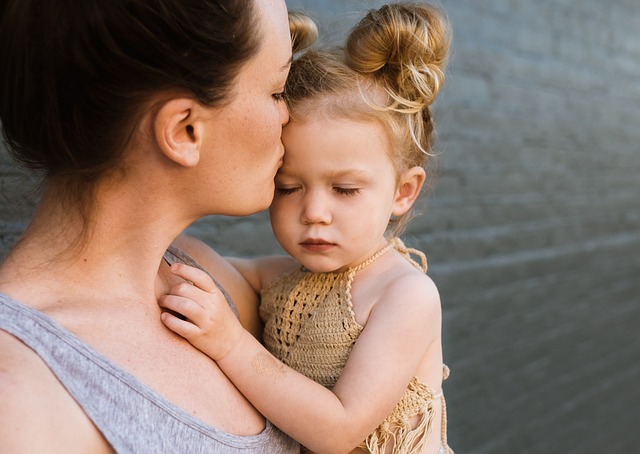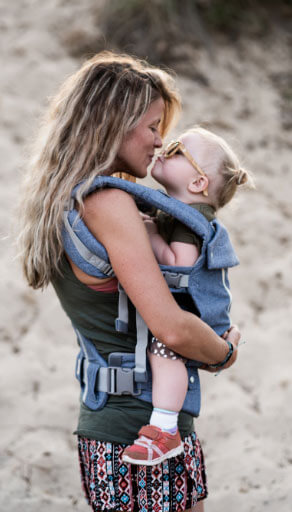Signs That Your Child May Have Anxiety and What to Do to Help Them

Dr Melanie Turner is a child and adolescent psychiatrist who works in Norwood South Australia. She is the director of her practice MyChild Psychiatry and Psychology, is a senior clinical lecturer at The University of Adelaide, works with the Royal Australian and New Zealand College of Psychiatry in training and assessing our future psychiatrists and completed her PhD at the University of Adelaide in 2015. She is passionate about family and child mental health, building strong foundations for adulthood and recognising the needs of children for a loving, accepting and patient world.
Signs That Your Child May Have Anxiety and What to Do to Help Them
Anxiety in children shows in a range of ways, and is actually very common. If we look at anxiety disorders throughout all of our population it occurs in 246 million people in the world. So that represents a very large portion of the population. Being female puts you at higher risk of anxiety as well.
Anxiety is a natural part of how our brain and body work. It is a system that developed over time to alert us to danger and keep us safe. So throughout evolution we developed senses that responded to loud noises, small spaces, feelings of heat and crowding as they could be signs of danger. If we think about what part of our brain ‘kicks in’ when we are driving and someone stops too quickly in front of you that helps understand anxiety.
- We see the car stop, but know we are too close
- Our heart rate increases, and we take a big breath
- We focus with our vision on the car in front as our eyes improve with long distance vision
- Our reflex to the brake is fast and we push quickly and hard on the brake as our muscle have increased blood flow and our heart rate increases
- The car stops in time and for a short period we are angry, exhausted and our heart rate is fast
- We then realise we are safe, our heart rate slows, we feel OK to move on and focus on something else.
All of that is a function of anxiety keeping us safe, it is hard wired to help us quickly react in a place of real danger by improving blood flow to muscles, long distance vision and increased focus. However, when this happens over and over again when we are not in danger – that is an anxiety disorder. If the symptoms get so high that the feeling of the need to escape increases to a level where we want to run, leave, or feel we are about to come undone’ that is often a panic attack and is a part of many anxiety disorders.
So, why am I telling you this? Well because it helps us describe what anxiety feels like and why it happens to us when our worry about something gest so large that our body and mind mistake it for danger.
Kids can often misinterpret these signals, and they may get frightened about them, they can also show irritability, chaotic behaviour, defiance (as they may want to leave where you are, demand that you go with them or refuse to do something that seems simple). The symptoms often start in a small way and these can be
- Declining to do activities that they usually find exciting or fun
- Sitting in class or in an activity and not participating – seeming frozen in a task and not able to move forward
- Avoiding going to class/activities and seeming nervous, complaining of vague body pains and stomach aches in particular
- Crying and being upset over very small problems
- Being highly self-critical, in particular after an argument or altercation
- Low self-esteem and a belief that they are unsuccessful at everything
We can do a range of things to help
- Help kids talk about feelings and emotions by having a home where conversations about worries are OK.
- Support kids to talk about anxiety and worry through a range of ways, a diary, to other members of the family, with friends.
- Help kids have healthy breaks from the day including time away from electronics, being outside for 20 minutes a day, a good nights sleep and positive social interaction help prevent anxiety from getting too large
- Practising ways to lessen anxiety by measuring our anxiety feelings.We can be a ‘detective’ and look for ‘proof’ that something is as worrying as we think. This could be like going to a supermarket and feeling anxious but then considering that you are in a safe, well-lit place, that provides things you need.
- Gradually building up strength to do anxiety provoking things and giving praise for kids who are slowly challenging anxiety such as making it through a few minutes of a new sport and then returning to do more the next week.
- Using meditation, yoga and mindfulness practices with our kids so that they build a sense of self management of anxiety
- Talking to school about their anxiety and help the school recognise the features of this and organise breaks in the day, support with the school counsellor
References
http://apps.who.int/iris/bitstream/handle/10665/254610/WHO-MSD-MER-2017.2-eng.pdf;jsessionid=BE2AA49207A958E0177FB1D80417225A?sequence=1














